Idrw Team
SOURCE: IDRW.ORG TEAM

The Indian Coast Guard (ICG), the vanguard of safeguarding the nation’s vast maritime interests, has seen remarkable growth over the last 15 years. With an expanding charter of duties and responsibilities, the ICG is now gearing up for further expansion. One crucial element of this modernization drive is the replacement of its aging Chetak helicopters. The ICG has set its sights on an indigenous solution – the Light Utility Helicopter (LUH) developed by Hindustan Aeronautics Limited (HAL).
The ICG, which plays a pivotal role in safeguarding India’s maritime security, has grown threefold in size over the past 15 years. This expansion is in direct response to the increasing complexities of its missions and the need to secure the nation’s vast coastline and exclusive economic zone.
Continue readingSOURCE: IDRW.ORG TEAM
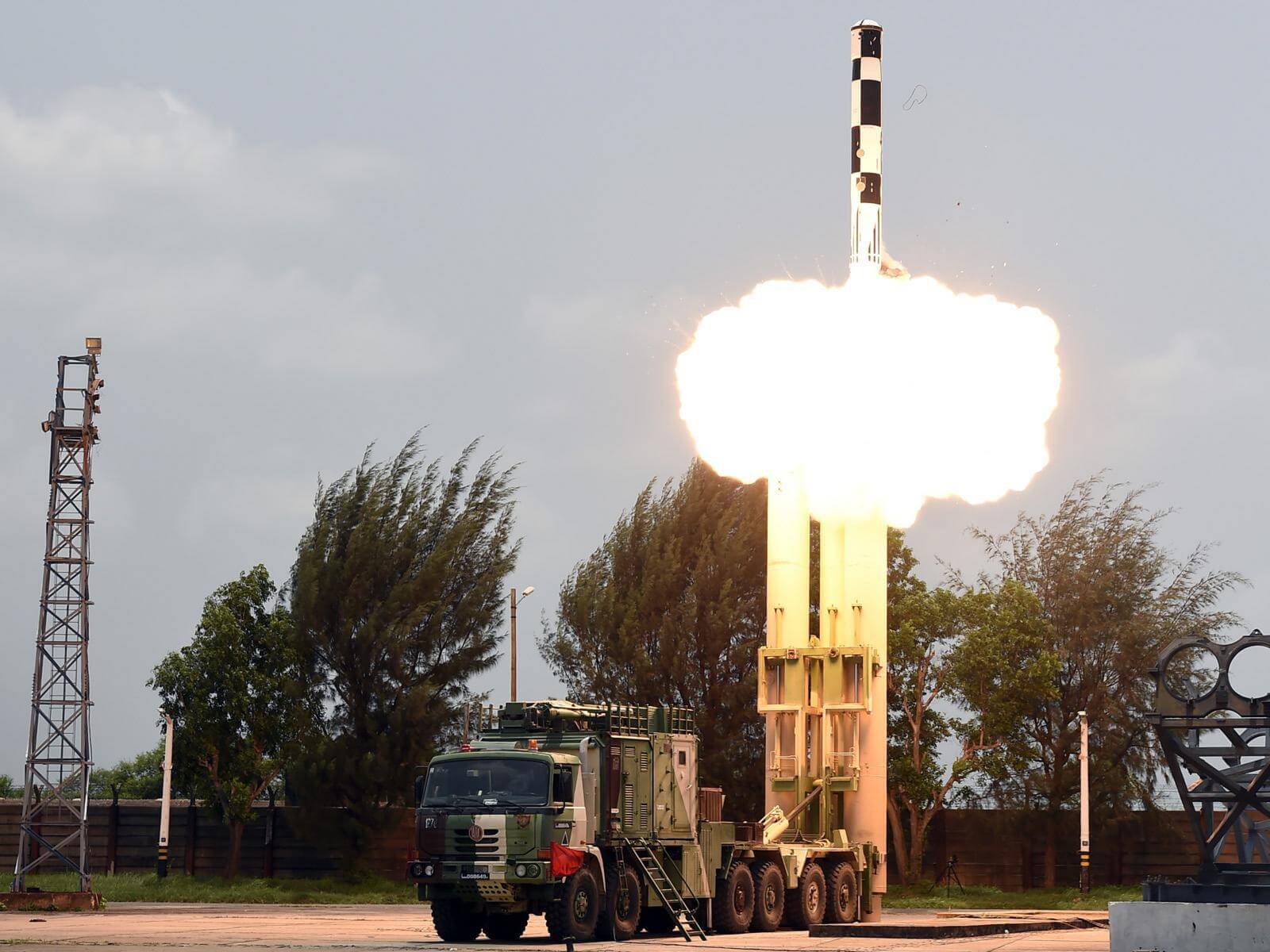
A recent report from Usman Haider, a research assistant at the Strategic Vision Institute in Islamabad, Pakistan, highlights the potential impact of the enhanced-range BrahMos missile on the deterrence equation between India and Pakistan. The extended-range BrahMos (BrahMos ER) has the capability to complicate the existing deterrence dynamics in the region.
India has been actively seeking precision strike systems to execute counter-force strikes, and the BrahMos ER is seen as a continuation of these efforts. This advanced missile system provides India with the strategic ability to strike targets deep within Pakistan’s territory. Its features, including maneuverability and high speed, make it challenging to intercept, adding a new dimension to the deterrence equation.
Continue readingSOURCE: IDRW.ORG TEAM
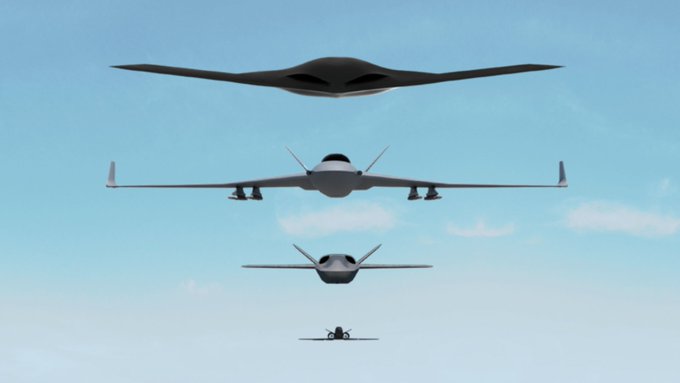
General Atomics Aeronautical Systems, Inc., a renowned aerospace and defense technology company, is on the verge of securing substantial orders from India for the acquisition of 31 of its MQ-9B SkyGuardian and SeaGuardian High-Altitude, Long-Endurance (HALE) Class Unmanned Aerial Vehicles (UAVs). The company is also keen to foster further collaboration on newer Remotely Piloted Aircraft (RPA) systems and work closely with the Indian Armed Forces.
General Atomics is looking to present a diverse array of cutting-edge RPA systems to the Indian Army and Indian Navy. These offerings include the Mojave and MQ-9B STOL platforms, which enable short takeoff and landing from unimproved surfaces, enhancing operational flexibility. The company is also set to introduce the Gambit Series of autonomous collaborative platforms, which expand tactical employment options for pilots. Additionally, General Atomics offers a line of Air-Launched Effects designed to deliver potent stand-off capability with stand-in performance, effectively transforming battlefield operations.
Continue readingSOURCE: IDRW.ORG TEAM

The ongoing conflict between Israel and Hamas has raised concerns worldwide, but officials have assured that it will not affect the supplies of Unmanned Aerial Vehicles (UAVs) ordered by the Indian armed forces. Nor will it impact ongoing projects to upgrade older Israeli origin equipment.
The Indian Army and Navy have recently placed orders for four Hermes 900 drones using emergency financial powers. These medium altitude long endurance drones will be manufactured in India by Adani Elbit at a facility in Telangana. This facility has a proven track record, having already delivered on export orders.
Continue readingSOURCE: IDRW.ORG TEAM

India is currently facing a critical challenge as it addresses significant delays in the delivery of F404 engines manufactured by General Electric (GE) Aerospace. These engines power the Light Combat Aircraft (LCA) Tejas-Mk IAs fighter jets, and their timely delivery is essential to meet the delivery schedules of the these indigenous fighter aircraft that will commence from February 2024 onwards.
General Electric (GE) Aerospace has been a longstanding supplier of F404 engines for India’s Tejas program. To date, the company has delivered 75 F404 engines to Hindustan Aeronautics Limited (HAL), the state-owned manufacturer of the Tejas, since start of the Program in late 80’s. However, a critical order for 99 F404-GE-IN20 engines, featuring enhanced thrust, was placed in 2021 Valued at $716 million with deliveries expected to commence from August of the current year, but till November it has happened yet.
Continue readingSOURCE: IDRW.ORG TEAM
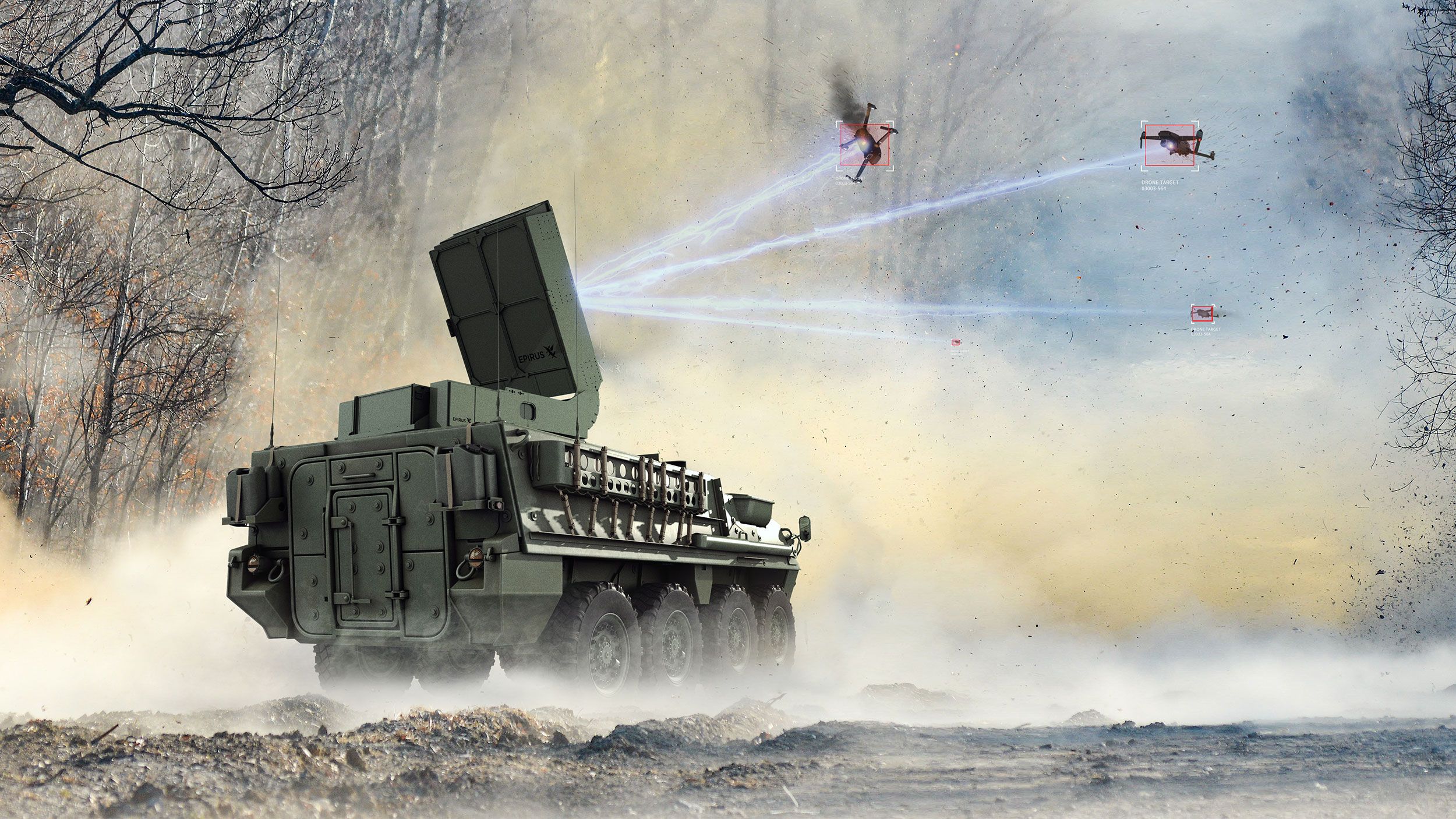
Recent conflicts in the region have witnessed the evolution of drone swarms as a potent threat, prompting India to adapt and innovate in its defense strategy. The Defence Research and Development Organisation (DRDO) is at the forefront of these efforts, aiming to develop a high-power microwave system to counter the growing menace of drone swarms.
Drone swarms have emerged as a formidable tool in modern warfare, capable of inflicting substantial damage and posing significant challenges to traditional defense mechanisms. As these threats become more prevalent, the Indian Armed Forces have taken proactive steps to address the issue.
Continue readingSOURCE: IDRW.ORG TEAM

The Indian Air Force (IAF) is actively exploring partnerships with the private sector to develop innovative inflatable and modular sun shelters that are set to play a vital role in its operational readiness and versatility. These versatile shelters are designed to cater to the unique requirements of the IAF during various operations, offering a flexible and adaptable solution for equipment protection and office workspace.
The need for such inflatable/modular shelters arises from the sensitivities associated with the equipment utilized by combat units during off-base operations. These shelters are intended to provide critical environmental protection for mobile elements and systems, including radar, missile systems, weapon storage, and aircraft. Additionally, they serve as functional workspaces and equipment shelters at off-base sites, ensuring that the IAF’s operational needs are met even away from established airbases.
Continue readingSOURCE: IDRW.ORG TEAM

In a remarkable display of operational preparedness and synergy, the Southern Command of the Indian Army recently showcased the IA-1101, the very first Advanced Light Helicopter (ALH) Dhruv, which was produced and inducted into the Indian Army on December 31, 2001. This event provided a rare opportunity to witness the legacy and evolution of this iconic aircraft.
The IA-1101 holds a special place in the history of the Indian Army’s aviation capabilities. As the inaugural member of the ALH Dhruv family, it represented a pivotal moment in India’s indigenous defense manufacturing efforts. This remarkable helicopter, now celebrating 22 years in service, has undergone significant transformations since its inception.
Continue readingSOURCE: IDRW.ORG TEAM

South Korea’s Hanwha Defense and India’s L&T (Larsen & Toubro) have reason to be optimistic as they anticipate repeat orders for 100 units of the K-9 Vajra 155mm/52-caliber tracked self-propelled howitzer from the Indian Army. These forthcoming orders, expected to be finalized early next year, will feature a specialized winter kit designed to adapt the K-9 Vajra for operations in high-altitude regions. This development underscores the importance of enhancing India’s artillery capabilities for challenging terrains, including the mountainous borders with Pakistan and China.
The K-9 Vajra, a collaborative effort between South Korea’s Hanwha Aerospace and Indian defense entity L&T, is derived from Hanwha Aerospace’s K-9 Thunder. L&T has already delivered 100 K-9 Vajra units to the Indian Army, marking a significant milestone in strengthening India’s artillery capabilities.
Continue readingSOURCE: IDRW.ORG TEAM
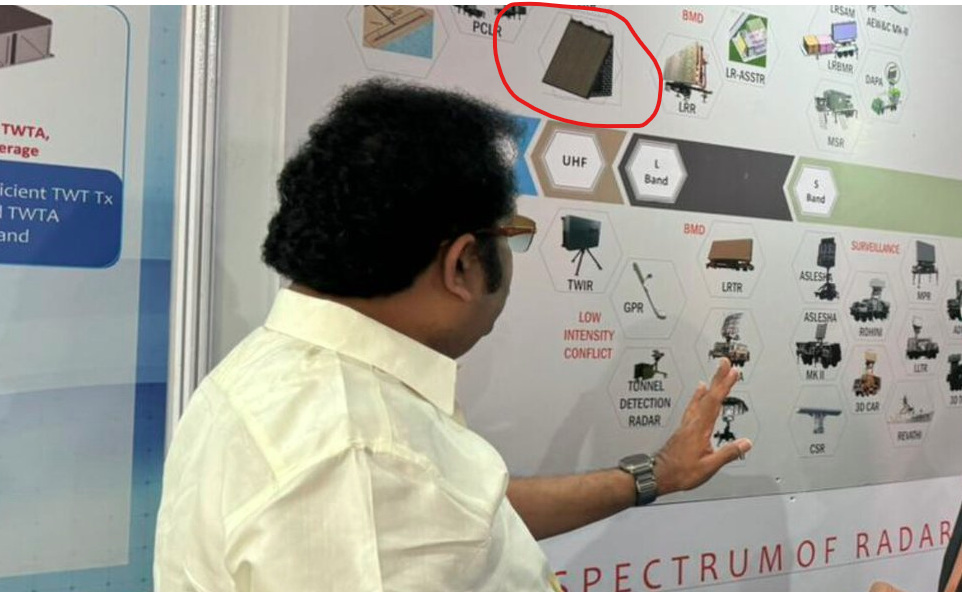
In a recent meeting held at the Electronics & Radar Development Establishment (LRDE), the Standing Committee on Defence delved into comprehensive discussions regarding the progress and status of various programs managed by the Defense Research and Development Organization (DRDO). Among the topics under scrutiny, the spotlight was on the remarkable array of radar systems developed by LRDE, including the highly-anticipated Very Long Range Radar (VLRR), a vital component of India’s Missile Defense and Space Surveillance Network.
The VLRR is a state-of-the-art, one-faced radar equipped with Transmit-Receive (TR) modules based on Gallium Nitride (GAN) technology. This innovative radar boasts sloping walls specially designed for the detection of missile launches taking place thousands of miles away. Its primary function is to provide extended warning times, spanning several minutes, offering a critical advantage in alerting command and control centers and facilitating precise cueing of fire control systems.
Continue readingSOURCE: IDRW.ORG TEAM
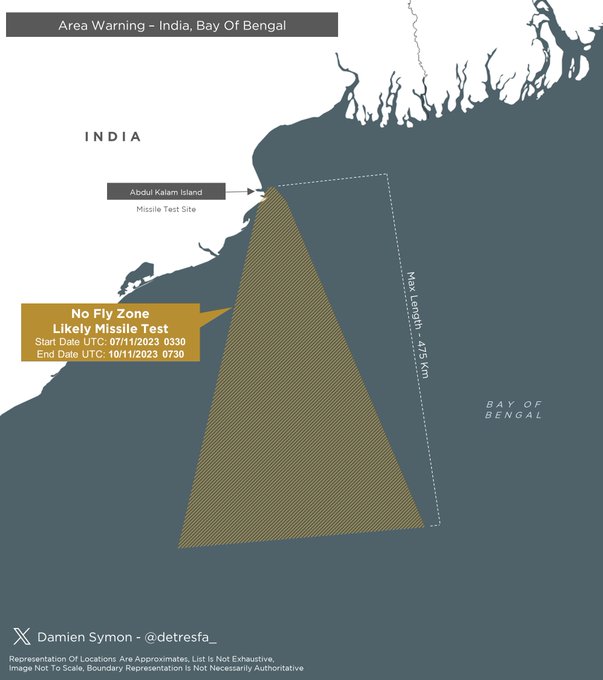
India has recently issued a Notice to Airmen (NOTAM) announcing a temporary no-fly zone over the Bay of Bengal. This NOTAM is indicative of a forthcoming missile test scheduled to take place between the 7th and 10th of November 2023. The specified area in the NOTAM spans a radius of 475 kilometers, suggesting that the test could involve either the BrahMos-ER (Extended Range) missile or the Pralay Surface-to-Surface Missile (SSM).
The decision to designate a no-fly zone underscores the significance and sensitivity of the upcoming missile test. The Bay of Bengal serves as a strategic testing ground for India’s defense capabilities, and these tests are crucial for evaluating the performance and effectiveness of advanced missile systems.
Continue readingSOURCE: AFI
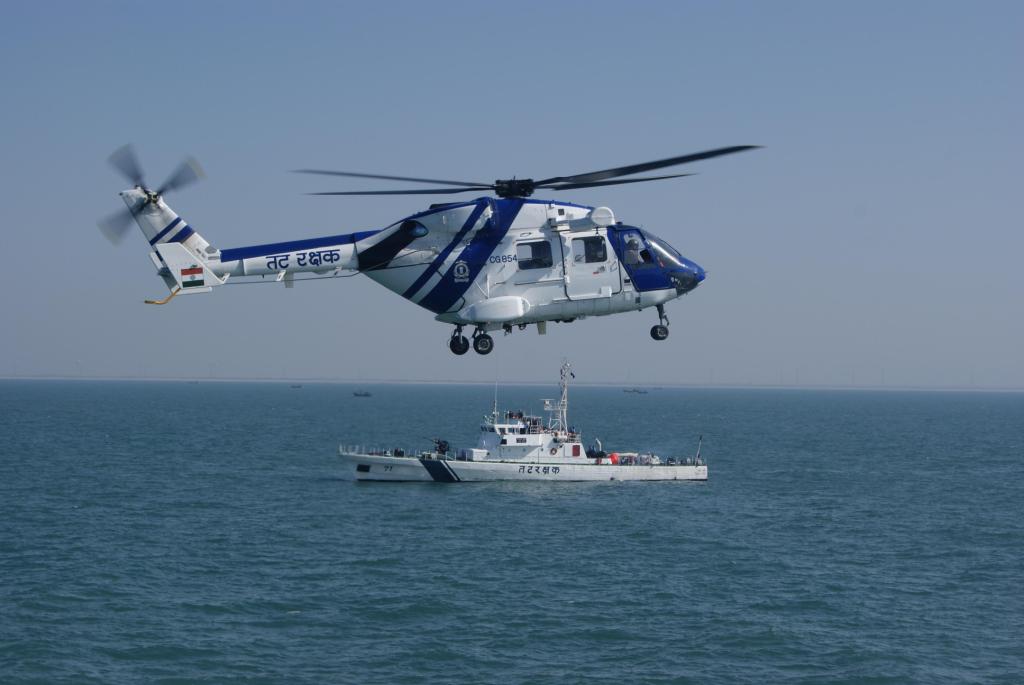
The Indian government has extended a generous offer to the Philippines, providing at least seven helicopters to support the rescue and humanitarian efforts of the Philippine Coast Guard (PCG) during disaster response operations. This welcome gesture of cooperation aims to enhance the Philippines’ capabilities in disaster management and humanitarian missions.
President Ferdinand R. Marcos Jr. expressed his appreciation for India’s offer, recognizing the significant contribution it could make to the Philippine government’s ongoing efforts to strengthen its rescue and humanitarian capabilities. The PCG, an integral part of the Department of Transportation (DOTr), will play a pivotal role in utilizing these helicopters effectively.
Continue readingSOURCE: IDRW.ORG TEAM
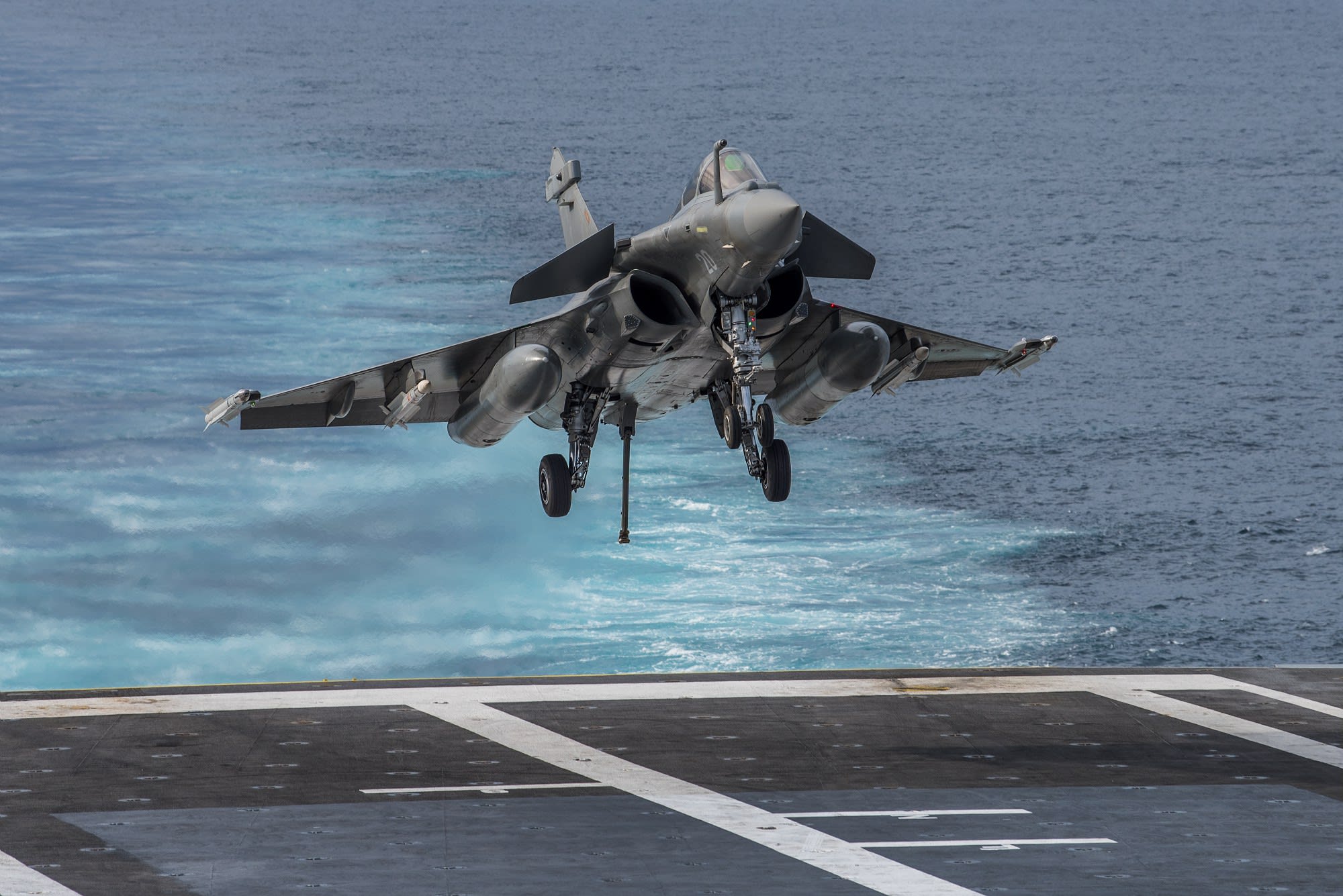
In a significant move aimed at fortifying its naval capabilities, India has embarked on a crucial deal worth a staggering 6 billion US dollars with France. This deal involves the acquisition of 26 cutting-edge Rafale Marine aircraft, designed to provide a substantial boost to the Indian Navy’s aircraft carrier fleet.
Government sources have confirmed that India recently submitted a formal Letter of Request to the French government, marking the initiation of negotiations for this high-stakes agreement. The acquisition includes 22 single-seated Rafale marine aircraft and four twin-seater trainer versions, all of which are destined to become an integral part of the Indian Navy’s defense operations on its aircraft carriers.
Continue readingSOURCE: IDRW.ORG TEAM

In recent years, Russia has been facing challenges in its long-standing arms trade relationship with India. The economic sanctions imposed on Russia have hindered India’s ability to make payments for weapon imports, causing a significant reduction in the volume of arms purchases from its traditional partner. This shift in dynamics has prompted Russia to explore new avenues for cooperation, leading to a notable change in the format of their military-technical collaboration.
The 21st meeting of the India-Russia Working Group on Military-Technical Cooperation and Defence Industry, held in New Delhi on October 27, 2023, marked a significant milestone in this evolving partnership. During the meeting, Russia proposed a new working process to India, aiming to adapt to the changing circumstances in the global arms trade market. The core of this proposal involves a transition from supplying complete weapons systems to providing India with technology and systems, enabling the country to domestically manufacture its own weapons.
Continue readingSOURCE: IDRW.ORG TEAM

The Flying Instructors’ School (FIS) at Air Force Station Tambaram is all set to commemorate its remarkable 75-year journey with a grand celebration on November 3 and 4. The Chief of the Air Staff, Air Chief Marshal VR Chaudhari, will be in attendance at this special event, where many serving and retired alumni of the institution will join in the festivities.
In conjunction with this milestone, India’s renowned state-owned enterprise, Hindustan Aeronautics Limited (HAL), has put forth an ambitious proposal to develop the HLFT-42, a cutting-edge supersonic trainer aircraft weighing 16 tons. This initiative aims to establish a compelling case for incorporating the Light Combat Aircraft (LCA) Lead-In Fighter Trainer (LIFT) aircraft into the existing Pilot training curriculum.
Continue reading